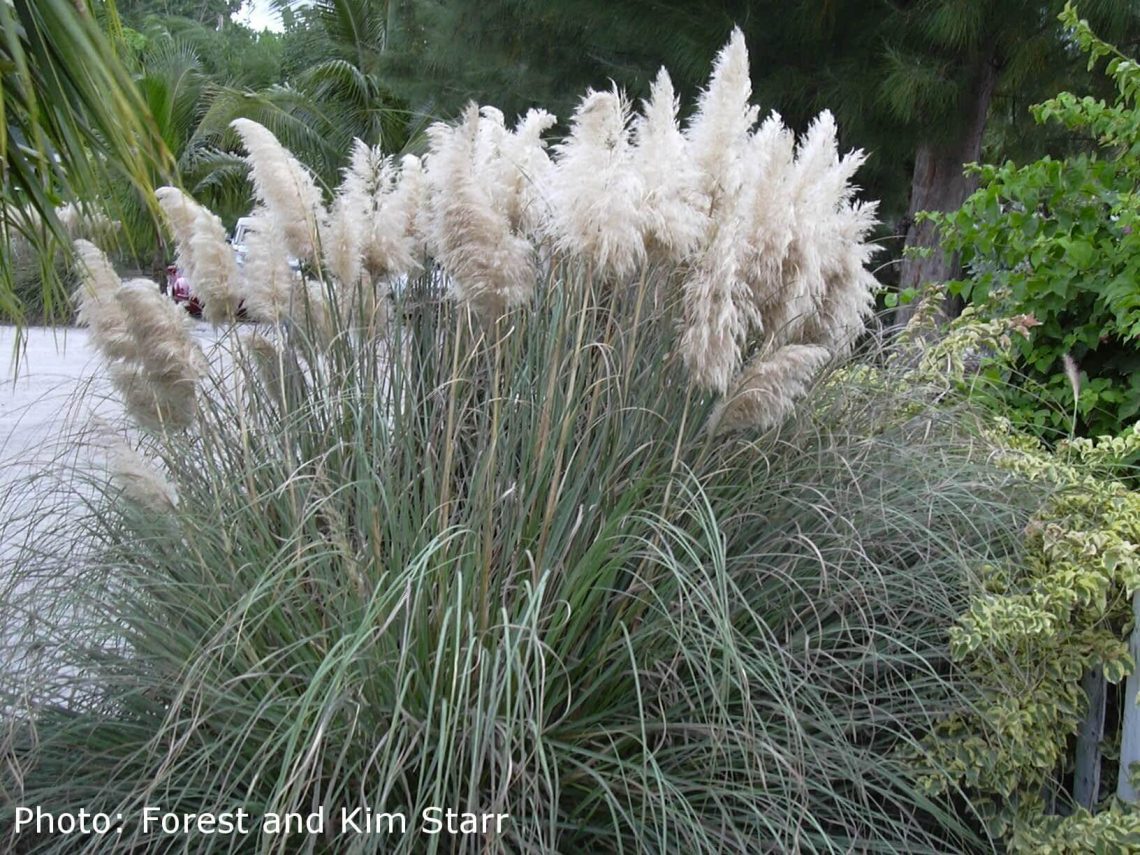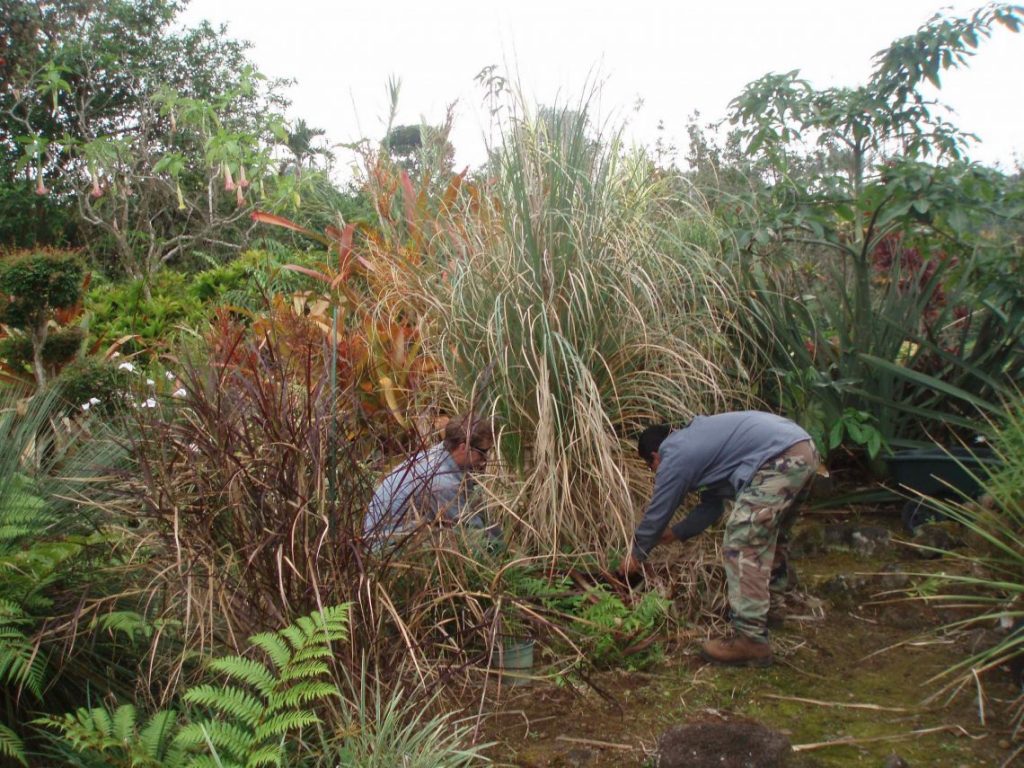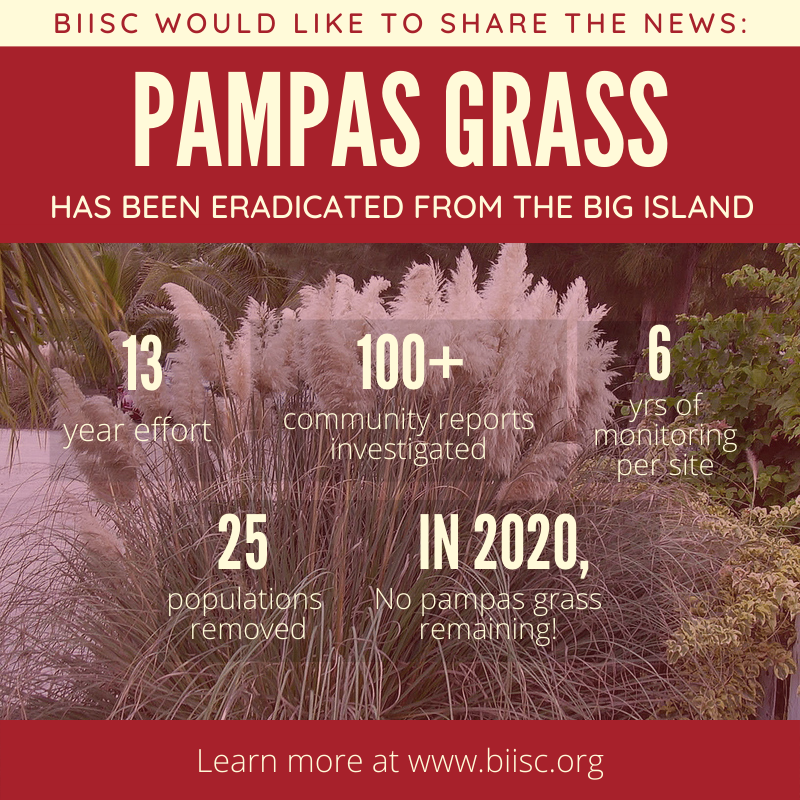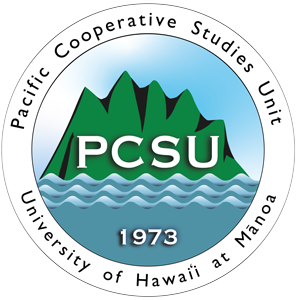BIISC is happy to share some good news: one of the most notorious invasive grasses in Hawai‛i, pampas grass, has been eradicated from the Big Island! Both species of pampas grass known to occur in Hawaii, Cortaderia jubata and Cortaderia selloana, have been removed, and monitoring continues for any keiki that might appear at the sites of previous known locations.Â
Both species of pampas are on the state’s Noxious Weeds list. The South American plant was shipped around the world in the late 1800s, popular for the showy plumes used in fashion and decor. It grows in large clumps, with feathery white or lavender plumes growing up to 10 feet tall. As people planted it across the Pacific, it slowly began jumping from planting sites and spreading out into natural areas, disrupting native ecosystems in places like New Zealand, California, and here in Hawaii. It is now widespread on Maui, and because it is adapted to fire in its native range poses a significant threat as a fuel for wildfires.

Pampas grass is a noxious weed.

BIISC staff controlling pampas grass.
Efforts to eradicate pampas grass
When the Hawai‛i Island eradication effort began in 2007, the plant was mapped in over two dozen locations including several places in Volcano and on the West side of the island. Although most of the adult plants were removed early in the eradication timeline, Joel Brunger, our field operations supervisor, points out the challenges of surveying for other pampas grass clumps near an adult plant: each grass clump is capable of producing thousands of lightweight seeds which are carried by the wind as far as 20 miles from the parent plant!
BIISC relied heavily on reports from the public about potential pampas sightings, carefully tracking down and identifying each plant to locate any previously undiscovered populations. Removal of the plants by BIISC crews took time, as permission from property owners was required for most of the sites. Locating and contacting property owners can pose a significant challenge for our control efforts, but overall most people were cooperative and eager to support the removal of an invasive plant from their property. The Hawaii Department of Agriculture assisted with securing access for removal of the noxious weed where permission was difficult to obtain. Finally, in 2019, the last known population of pampas was removed, and native māmaki was planted in its stead. BIISC botanists continue to monitor the area to catch any keiki plants that may spring up.

An Ongoing Risk
Despite the razor-sharp leaves and potential for fueling wildfires, pampas grass is still sold throughout the world in the horticultural trade and used for landscaping. During the course of the eradication effort, BIISC developed the Plant Pono program, a nursery endorsement and education effort aimed at stopping the sale of invasive plants in Hawaii. Pono-endorsed nurseries voluntarily pledge to sell only non-invasive “pono†plants. There have been no sales of pampas grass in Hawaii for the last several years, although seeds purchased online continue to be a risk for introductions of invasive plants.
If you spot an online seller promoting pampas grass and allowing shipment to Hawaii, pass the info along to us! Often, just informing a well-meaning grower outside of our state about the potential risks is enough for them to stop any shipment of the plant to the islands.
BIISC takes the lead on early detection and rapid response to new invasive plant species, which means our teams search for new species of plants on the island and target them for eradication when necessary and possible. Efforts to control many of our most notorious widespread invaders like miconia, albizia, or strawberry guava came too late, well past the time when it was economically possible to remove those species from the island. There is only a short window of time when an invasive species can feasibly be eradicated. Once that window has closed, control strategies switch to other efforts, like containment, or at the furthest point, exclusion only from high-value areas.
Currently, BIISC is targeting several invasive plant species assessed to be within the “window of eradication.” These species are not yet widespread, and BIISC crews are working to remove them now so that they will not become the albizia or miconia of the future. Visit our target species page to become familiar with our target species, and be sure to report any new or strange plants you encounter!
